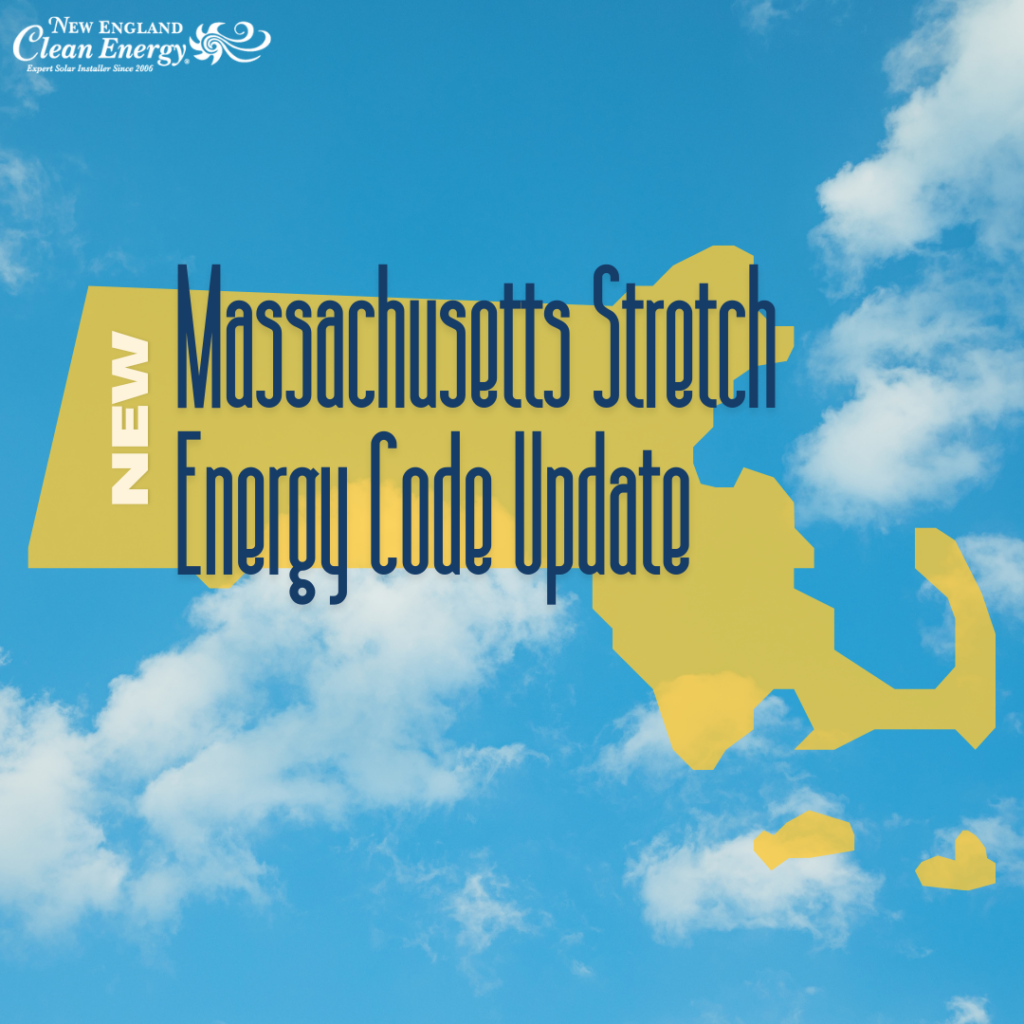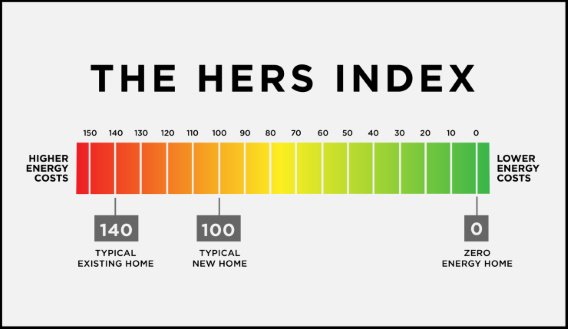As the world continues to grapple with the challenges of climate change, the need for sustainable solutions has become more crucial than ever. In line with this commitment to a greener future, we are excited to share the latest update on the Massachusetts Stretch Energy Code, effective July 1, 2024. This major update sets higher energy efficiency standards for new homes in Massachusetts, requiring more environmentally friendly and energy-conscious construction. While this code change currently applies only to Massachusetts, the language is built into the international energy code. And as more states adopt new building codes based on the International Residential Code (IRC), the changes will promulgate everywhere.
Higher Standards for New Homes:
Under the Massachusetts revisions to the Stretch Energy Code, any new home permitted after July 1, 2024, must achieve a Home Energy Rating System (HERS) score of 42-45, or lower.
The HERS Index is a nationally recognized system that measures a home’s energy efficiency. It includes plan reviews and inspections by licensed energy professionals and “blower door” tests. A Lower HERS score indicates better energy efficiency. So, homes built under the updated code will consume less energy, reduce greenhouse gas emissions, and decrease utility expenses for homeowners compared to older homes. (HERS is based on a 100-point scale. A HERS score of 45 means that the house is 55% more energy efficient than the “reference” home. The reference home was built to the standards of 2006 construction codes and practices.)
Caveats and Exceptions:
While the new standards are ambitious, certain provisions have been put in place to accommodate specific situations. It is essential to be aware of the following caveats:
Geographic Variations:
The HERS requirements do not vary across Massachusetts but do vary across the nation and climate zones.
Performance Testing:
Compliance with the updated Stretch Code requires rigorous energy performance testing and verification. Builders must work closely with energy consultants or HERS raters. These energy experts will assess various components of the home, from insulation, air sealing, HVAC systems, windows, and renewable energy integration.
Benefits and Future Outlook:
Implementing stricter energy efficiency standards for new homes creates a host of benefits for homeowners, the environment, and the community as a whole:
Energy Savings:
Homes built under the new code will significantly reduce energy consumption, leading to long-term cost savings for homeowners in the form of lower utility bills.
Environmental Impact:
By decreasing energy usage, these energy-efficient homes will contribute to a substantial reduction in greenhouse gas emissions, making a positive impact on carbon emissions.
Comfort and Quality:
Improved insulation, air sealing, and energy-efficient systems will enhance indoor comfort. For example, air leaks are virtually eliminated along with the corresponding cold spots.
Marketability:
Energy-efficient homes are increasingly sought after by homebuyers due to the financial savings and environmental benefits they offer. Meeting or exceeding the Stretch Code requirements can be a significant selling point for builders and developers.
The updated Massachusetts Stretch Code, effective July 1, 2024, represents a significant step forward in our collective commitment to a more sustainable future. By raising the energy efficiency standards for new homes, we aim to create greener, more cost-effective, and comfortable living spaces while reducing our impact on the planet. As an industry, we must embrace these changes and work collaboratively to meet these new standards, contributing to a healthier and more resilient future for generations to come.
What The Stretch Code Means for Solar: 
The Massachusetts Stretch Code sets higher energy efficiency standards for new residential and commercial buildings. The code requires that all new homes permitted after July 1, 2024, achieve a HERS score of 42-45 or lower. This means that new homes will need to be built with elevated levels of energy efficiency to minimize energy consumption, reduce greenhouse gas emissions, and decrease utility bills.
The Stretch Code requires homes to be “solar-ready,” meaning that every new home must have a designated roof area for future solar PV installation and be constructed to accommodate installation. By complying with this requirement, builders can ensure that solar panels can be added easily in the future, further reducing energy consumption and costs.
If installed at the time of home construction, solar energy allows the builder to meet a score of 45 instead of the lower, and harder to achieve score of 42. That is valuable for builders and homeowners.
The Massachusetts Clean Energy Center provides resources and guidance for builders and homeowners looking to incorporate solar energy into their buildings. They offer information on rebates, incentives, and financing options to encourage continued adoption of energy-efficient and renewable energy systems.
The Stretch Code’s higher energy efficiency standards require builders to think about a home’s cost-of-ownership along with their more traditional approach of thinking about cost-of-construction. This adds complexity for builders but is a positive change for home buyers. And incorporating solar panels is a practical and cost-effective way to meet the cost-of-ownership challenges and the code requirements.
In the end, we think everyone will undoubtedly benefit.
If you liked this article, you may also like:
Maine Solar Incentives: A Guide to Maximizing Your Benefits
7 Compelling Reasons You Should Install Commercial Solar Power in 2024





